Novels in Verse for National Poetry Month, Week 4 By Lisa Krok
This year’s National Poetry Month has certainly been different than usual, but poetry is still here for you, even while quarantined! Writing poetry can also be very cathartic. I have been posting a verse novel on Twitter @readonthebeach each day, along with a corresponding poetry activity. Click here for my previous post about using my book, Novels in Verse for Teens to reach marginalized and reluctant/striving readers, and here for the round-up from week one , week two, and week three. On to the final post for National Poetry Month, week four.
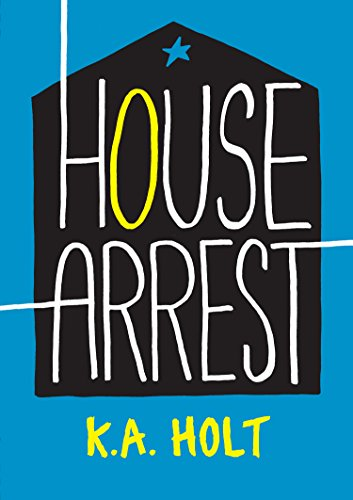
Day 22: House Arrest by K.A. Holt
Summary:
Tim never thought he would be on house arrest for the next year. He thought probation was something that happened to other kids, not to him. As he checks in weekly with both a therapist and a probation officer, he keeps a journal. After his father leaves, Tim takes it upon himself to assist his mom financially and help with his sickly baby brother, while chronicling his thoughts in the journal.
ADVERTISEMENT
ADVERTISEMENT
Poetry journal activity:
Writing in a journal can be a way of releasing stress on the page. Tim attends therapy as part of his probation, and keeps track in a journal. “A journal is a place to express yourself, to record your thoughts, feelings and observations, and to cultivate your poetic style. The cool thing about your journal is that it’s yours. You can keep it secret or share it with your friends and family. You might even read some of your poetry out loud at a talent show or poetry jam. Whatever you decide to do with it, a daily poetry journal will keep you writing. And the more you write, the better writer you become!”, (Nesbitt, 2019). See Kenn Nesbitt’s suggestions for writing in poetry journals : https://www.poetry4kids.com/lessons/how-to-start-a-poetry-journal/

Day 23: Up From the Sea by Leza Lowitz
Summary:
On a disastrous day in March 2011, Kai loses almost everyone and everything he cares about when a tsunami devastates his Japanese village. Ten years later, he is offered a trip to New York City to meet kids who lives were affected by 9/11, and he realizes he has the chance to find his estranged American father while there. On the tenth anniversary of the tragedy, Kai visits Ground Zero and decides the way to make something good come out of something bad is to return home and help rebuild his own town.
Although a work of fiction, the author was in Tokyo, Japan when the Great East Japan Earthquake and Tsunami hit on March 11, 2011. Fortunately, from her relatively close but “safe” home, her family was all okay. Her idea of a boy who loves soccer was inspired by a boy she met in the disaster zone.
Haiku activity:
Japanese Haiku pairs well with this book.
https://powerpoetry.org/actions/how-write-haiku-poem

Day 24: For Every One by Jason Reynolds
Summary:
Jason Reynolds is a self-professed dreamer. He has been working to make his own dreams come true, but they take time…not just for Jason, but For Every One. Kids who may be scared to dream, or don’t even try because they have never seen one of their dreams come true: Jason wants you to know that just having the dream is the spark you need, and to take a leap of faith from there.
Dream poetry activity:
Poet Langston Hughes was also a dreamer. First, share his poem Dreams, (1926). https://poets.org/poem/dreams
Encourage teens to explain what they think the poem means. Next, share Hughes’ poem Harlem, (1951).
https://www.poetryfoundation.org/poems/46548/harlem
Foster discussions debating the differences between these two poems, and the messages and moods they convey.
Reynolds narrates the audio version of this book himself. Play that for the group to listen to while they are writing their own dream poems. Since dreams are personal and very open ended, teens select their form of choice for this activity. This can also evolve into spoken word poetry for those who are inclined.

Day 25: American Ace by Marilyn Nelson
Summary:
After Connor’s grandmother dies, a letter is found with a confession that shakes up their close Italian American family. Connor’s grandpa, the man who raised his father, is not his birth father. When the only clues to the identity of this man are a pair of pilot’s wings and a class ring, Connor decides to investigate himself. What he discovers will change the understanding of identity and race within their entire family:
his biological grandpa was actually a Tuskegee Airman.
Identity poetry activity:
Nelson’s poem “Beyond Skin” on page 117 in American Ace takes on identity and what it means to each of us. What does it mean to be a descendant of a Tuskegee Airman? What is Nelson trying to say in “Beyond Skin”? Identity can encompass a variety of designations for a single person. I may see myself as librarian, author, daughter, sister, friend, White, short, blonde, smart, Irish, and Hungarian. Someone else may see my identity a different way, depending on whose point of view it is, or in what context they know me (or don’t know me). Encourage teens to think about what they know about their own identities. Do pieces from your past affect who you are today? Teens write poems in free verse about their own identities. This could be the identity they feel themselves, or how they think others perceive them.
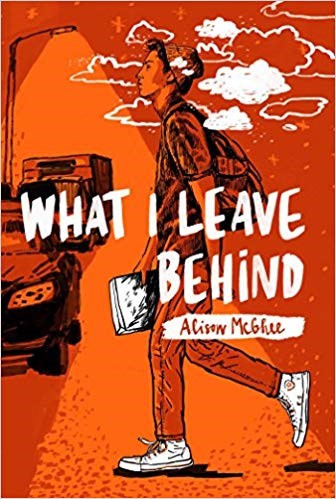
Day 26: What I Leave Behind by Alison McGhee
Summary:
After his father commits suicide, Will begins walking…and walking…and walking. But walking doesn’t take away his urge to recreate his dad’s famous cornbread recipe, which he just can’t seem to get right. When he learns his friend Playa has been raped at a party, he decides to do some good in the world to avoid his own sadness. He begins leaving small gifts for people in his life, from the homeless guy “Superman”, to neighborhood kid “Little Butterfly Dude”, to his dear friend, Playa. By helping others, he begins to move past his own trauma. This novel in verse is told in 100 poems of 100 words each.
Penny poetry activity:
Alison McGhee’s poems are brief but mighty in this book. Adding one deliberate word at a time, she doles them out like pennies until she gets to 100 on each page. The number 100 has significance in multiple ways in this story: there are exactly 100 poems of exactly 100 words each, one dollar (100 pennies) is the cost of each item that Will buys to give others. This activity is open ended in that it is free verse, but specific in that penny poems must be 100 words each. Advise students to choose wisely, and to use a thesaurus to substitute words or phrases as needed so they reach exactly 100. Ninety-nine won’t do it. No change given, so don’t go over one dollar!
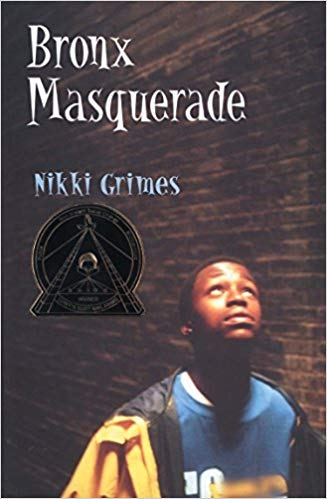
Day 27: Bronx Masquerade by Nikki Grimes
Summary:
Wesley Boone sparks an interest in reading poetry aloud when he goes first at school. The weekly poetry sessions soon evolve as an outlet of sorts for the group, as they reveal their inner thoughts about each other and themselves. In doing so, they uncover what lives behind the eyes, beneath the skin, and beyond the masquerade.
Cypher poetry activity:
Mr. Ward’s school assignment evolves into poetry via open mic, and Wesley’s classmates bring their own topics and concerns to the mic. The emotions presented in open mic poetry sometimes progress into poetry slams.
A cypher is a group of poets who take turns picking up and adding on to the poetry from the person before them. Or, in a poetry slam, a circle of poets who take turns reciting poems, which can expand into a hip-hop freestyle battle. Cypher poetry is very open ended and can be written or spoken. The key is to keep going and not break the circle. Pass the paper or pass the mic. Try it on paper first to become comfortable and create a rhythm of sorts, then advance into an open mic version.
See this example of a cypher: https://www.youtube.com/watch?v=hFyBURoUSE4
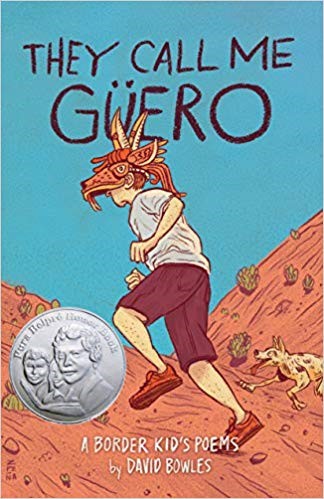
Day 28: They Call Me Guero by David Bowles
Summary:
Guero is a pale skinned boy living on the border with his loving Mexican American family. He is wise beyond his years, wondering things like if he is Catholic and his friends are Mormon and Christian, how can everyone be right? After the death of his dog, his sister’s Quinceanera provides the family with a bright ray of sunshine. Guero’s teacher buoys his writing, telling him, “Poetry is the clearest lens for viewing the world.”. Together with his Bookworm Squad friends, Los Bobbys, he manages a bottle rocket fiasco and attempts to get the girl he is crushing on hard. When he encounters the school bully, help comes from an unexpected place.
Couplet poetry activity:
Guero uses couplets to describe his days in the poem “Sundays” on page thirty-eight.
A couplet is two lines of verse together that are linked by both rhythm and rhyme.
The quick pacing and concise language of couplets are used by poets to make their poems grab the reader’s attention. A couplet is considered closed when the two lines form a bound unit of grammar, like a sentence. Have teens choose a day of the week to write about. First, they brainstorm a list of rhyming pairs that come to mind about their day of choice. Next, they sequence the pairs and write couplets. Some may be closed, while others may continue to the next stanza of lines. Remind students to use a thesaurus for help finding synonyms and antonyms to fit their rhymes.
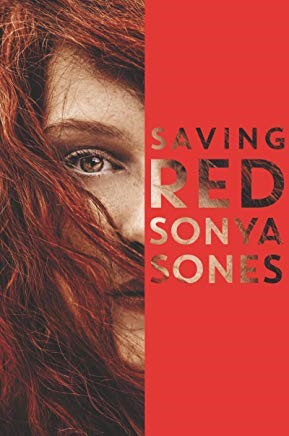
Day 29: Saving Red by Sonya Sones
Summary:
As part of her community service requirement for school, Molly Rosenberg volunteers to participate in the annual homeless count in Santa Monica. When she meets Red, Molly is determined to reunite the spirited homeless girl with her family in time for Christmas. This is easier said than done, as Red is tight lipped about her past, while Molly has her own things from the past she won’t discuss. When she realizes Red is exhibiting signs of being mentally ill, she desperately tries to keep her safe until she can figure out how to get Red back to her family.
Homelessness poetry activity:
Homelessness in the U.S. is on the rise and this complex issue impacts people from of all ages and backgrounds. Read below to learn more about homelessness and how you can respond to it with your words—and your actions.
https://powerpoetry.org/actions/write-poem-help-homeless
ADVERTISEMENT
ADVERTISEMENT
Remember that teens have the right to privacy and may not want to share their poems, but use it for their own self-awareness and catharsis. This activity is meant to look within or to dig deep to think about ways to advocate for others, not out anyone or make them uncomfortable in any way. Since homelessness and mental health can be very personal subjects, free verse is a recommended option for this activity.
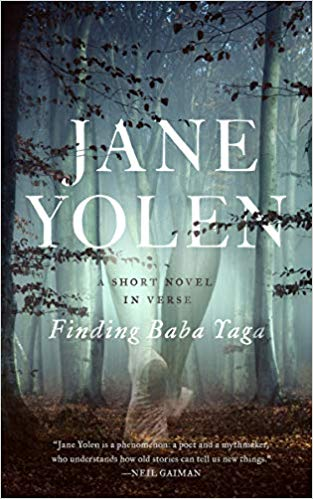
Day 30: Finding Baba Yaga by Jane Yolen
Summary:
You may THINK you know the story of Baba Yaga…but you do not. When Natasha gathers her strength to leave her harsh, controlling father, she comes upon the magical house in the woods…the legendary one that walks on chicken feet with a fairy tale witch inside. The theme of a young woman discovering the power to take control of her fate and speak up is both timely and timeless.
Imagery poetry activity:
Imagery is the process of using vivid, descriptive words to give the reader a detailed picture of what is going on in your writing so that they can easily picture, or visualize, it in their own mind. Page 417 introduces what happens after a knock, knock at the door:
“I see the bony hand first,
knuckles broken on the wall of time.
Dirt under long fingernails,
It signals me in.”
Use the first line as a writing prompt to create creepy poems using imagery and personification.
-Lisa Krok

Find these activities and much more in Novels in Verse for Teens, available now.
Request it at your Indies.

Lisa Krok, MLIS, MEd, is the adult and teen services manager at Morley Library and a former teacher in the Cleveland, Ohio, area. She is the author of Novels in Verse for Teens: A Guidebook with Activities for Teachers and Librarians, available now from ABC-CLIO. Lisa’s passion is reaching marginalized teens and reluctant readers through young adult literature. She was appointed to the 2019-2020 YALSA Presidential Advisory Task Force, served two years on the Quick Picks for Reluctant Reader’s team, and is serving on the Best Fiction for Young Adults (BFYA 2021) committee. Lisa can be found being bookish and political on Twitter @readonthebeach.
Filed under: Uncategorized
About Karen Jensen, MLS
Karen Jensen has been a Teen Services Librarian for almost 30 years. She created TLT in 2011 and is the co-editor of The Whole Library Handbook: Teen Services with Heather Booth (ALA Editions, 2014).
ADVERTISEMENT
ADVERTISEMENT
SLJ Blog Network
The Moral Dilemma of THE MONSTER AT THE END OF THIS BOOK
Cover Reveal and Q&A: The One and Only Googoosh with Azadeh Westergaard
Winnie-The-Pooh | Review
Parsing Religion in Public Schools
ADVERTISEMENT

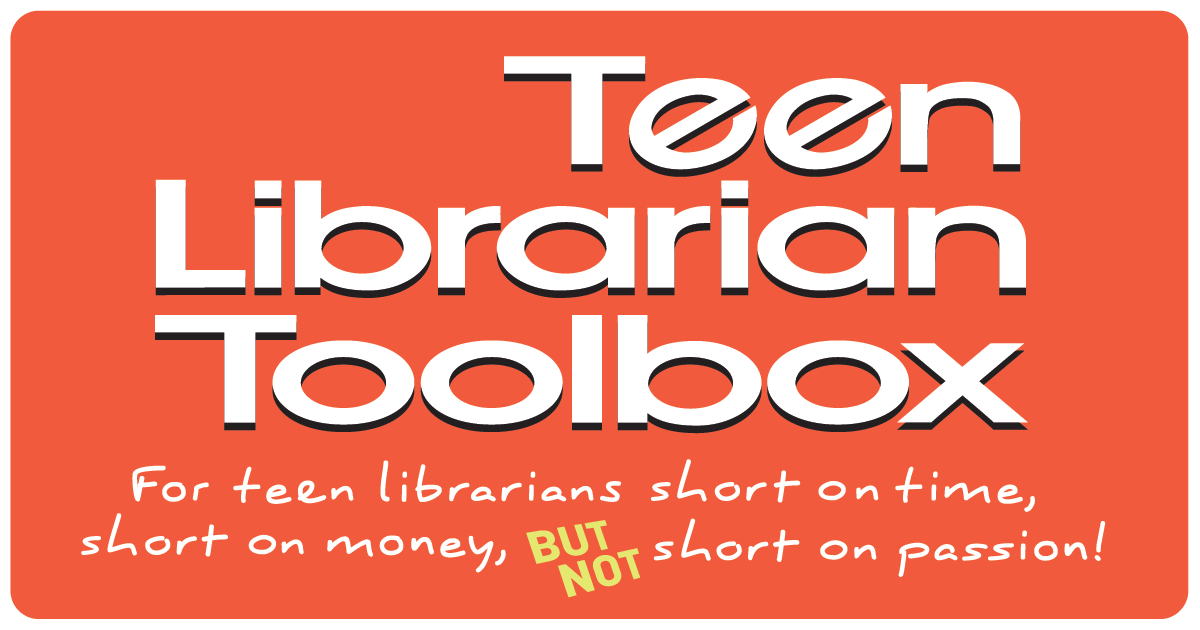

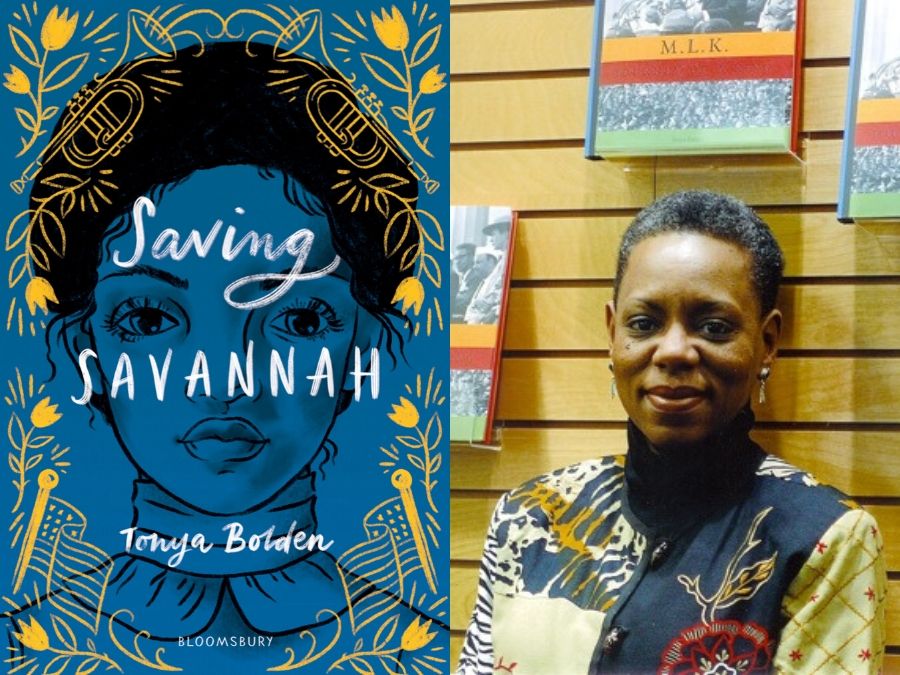




Was looking for some takes regarding this topic and I found your article quite informative. It has given me a fresh perspective on the topic tackled. Thanks!